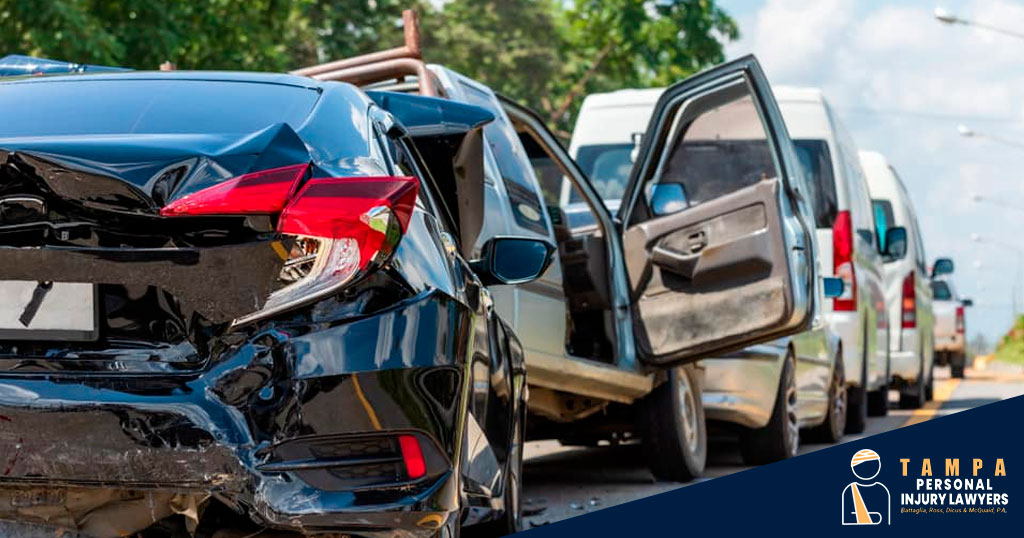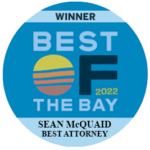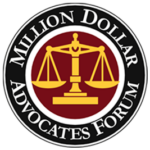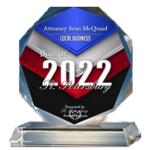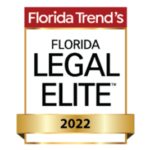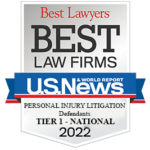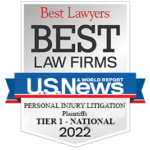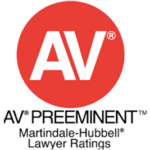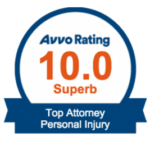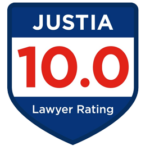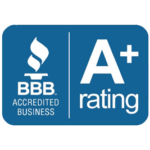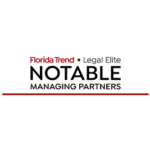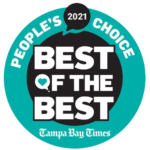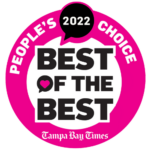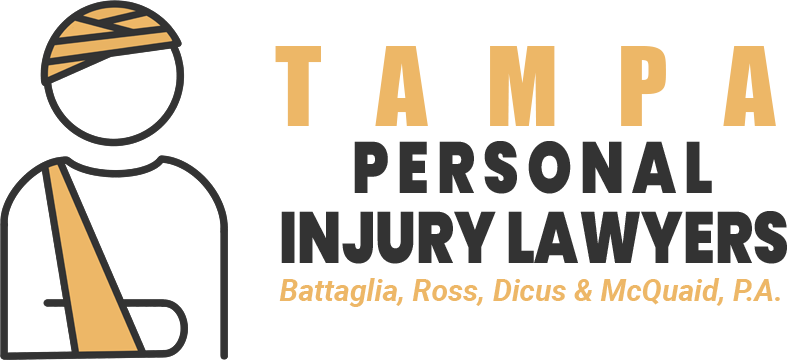In this article, we hope to shed some light on different chain reaction car accident scenarios and help you understand who is at fault and how that’s determined.
When you get into a car accident involving multiple parties, it can be tricky to determine who is at fault. Moreover, there may be several parties at fault. On top of determining who is at fault, you have to consider what caused each person’s error and how much fault they contributed, which makes for a very complex process of establishing liability.
In almost all of the chain reaction cases that our Tampa Personal Injury Lawyers have handled, determining liability is a challenging task. More specifically, finding out who is at fault for the initial collision can be a confusing and challenging process. This is relevant because identifying who is liable, or at fault, will directly affect your ability to file a successful personal injury claim and walk away with fair compensation.
Table of Contents
ToggleWhat is a Chain Reaction Car Accident?
A chain reaction car accident is one that involves more than two cars and is much more complicated than a traditional two-car accident. In those accidents, it’s much easier to determine who is at fault or if one party was more at fault than the other.
But in a chain-reaction car accident, there are multiple, or at least three, vehicles involved. Understanding the concept is pretty simple; the complicated part is determining who is at fault. In most chain reaction accidents, one vehicle causes an initial collision which prompts a second collision and so on and so forth. This often ends in a multi-car pile up accident situation.
Imagine there are two vehicles stopped at a red light and the rear car is following the front car very closely. Let’s call the front vehicle Car 1 and the rear vehicle Car 2. If the driver of Car 2 doesn’t notice the red light on time and crashes into the back of Car 1, thrusting it into the intersection. Then, another car that’s coming from the opposite side of the intersection (Car 3) T-bone’s Car 1 on the side.
This example only involves three cars, but any collision that starts with a single collision and consequently leads to subsequent collisions is a “chain-reaction” collision. A chain reaction crash can involve 3 to 10 or even hundreds of cars. A massive chain-reaction car crash might occur in inclement weather conditions where there are dangerous road conditions, such as icy roads, and poor visibility due to dense fog.
Sin chain reaction collisions involve more cars and people, they also result in more injuries. How badly everyone gets injured or how many cars end up getting involved depends on the severity of the initial collision that started the chain reaction.
In the above example, if Car 2 was going 60 mph and hit Car 1, the results would be dramatically different than if Car 2 had been driving 25 mph. In essence, the initial collision is the onset that determines how severe the chain reaction will be. At this point, the question of who is at fault is still unclear.
Was Car 2 at fault for the entire accident since they were the “ground zero” for the chain reaction that caused Car 1 to get both rear ended and T-boned? Or is Car 1 partially at fault for not making a slower, complete stop to give Car 2 enough time to stop behind them? Perhaps even Car 3 is partially at fault for failing to see Car 1 enter the intersection and proceeding to T-bone them.
What Causes Chain Reaction Car Accidents in Tampa?
Car accidents happen every day, but chain reaction accidents happen less frequently. Many times these accidents are caused by negligence, environmental conditions (e.g., heavy rain or icy roadways, or dangerous roadways. Other causes include texting while driving, drunk driving, excessive speeding and disobeying traffic signals.
How Do You Determine Fault in a Tampa Chain Reaction Car Accident?
Proving fault involves determining which drivers were negligent. Rather than simply pointing fingers and assigning blame, these accidents require a thorough investigation to determine which party caused the initial collison and who else contributed fault.
So, to determine fault in a chain reaction car accident, the first step is to prove negligence. Tampa ordinances enact comparative negligence. While Tampa previously upheld pure comparative negligence laws, allowing any driver with partial fault to recover damage compensation, new laws under House Bill 837 have administered a “modified comparative negligence” directive.
What this means is that accident victims in a chain reaction crash can only seek damage reparations if they are less than 50% at fault for the crash. Insurance companies regularly use comparative negligence as a defense to minimize their payouts to injury victims. What they do is claim that their policyholder is only marginally at fault, thus reducing their liability and the amount they have to pay.
The backbone of any negligence -based personal injury claim is strong evidence. This is vital to support your claim and prove that one or more other parties’ negligence caused your injuries. SO, building a strong case boils down to gathering evidence to illustrate the negligence of the other parties to support your version of events and show that you were not negligent or had minimal fault.
How Do You Gather Evidence for a Tampa Chain Reaction Car Accident?
You can start gathering evidence immediately after the accident, starting with the police officers who respond to the scene. They will assess the situation, interview all parties involved (including witnesses if there were any) and then fill out an official incident report that goes on the record. This is the first piece of evidence you should get a hold of and get to your attorney to start building your case.
You can also take pictures and videos of the accident scene with your mobile device if you are in a condition that allows you to do so. But if you have any injuries, make that your top priority and do not delay getting medical attention. The timeline of the accident and when you got medical treatment will be important for you claim too, so never delay getting medical care.
That said, if you are capable of moving around, take pictures of the accident scene, your injuries, any debris surrounding the scene, property damage, and other conditions you think would be relevant (e.g., weather conditions, obstacles in the road, etc.).
In a complex case like a chain reaction car accident, it may be necessary to have an accident reconstruction expert recreate or simulate the accident. This will give insight as to how the accident happened and could potentially identify who was negligent and how much fault they contributed.
How Do You Establish Liability in a Chain Reaction Car Accident?
Now that you understand fault and the importance of gathering evidence, you’re probably still asking the question: How do you assign the varying degrees of liability when there are multiple parties involved in an accident?
In a chain reaction crash, the general rule of thumb is that the initial driver who caused the primary collision is at fault. But, it’s also possible for other parties to share or have a percentage of fault.
To illustrate, imagine another three-car accident scenario, involving Car X,
Car Y, and Car Z. Drivers X and Y are stopped at a traffic intersection when driver Z comes blasting down the road, unable to stop in time. Driver Z hits driver Y, who then proceeds to bump driver X. In this instance, driver Z is at fault for causing the initial collision with driver Y and the subsequent collision between drivers X and Y.
Since driver X and Y were merely sitting at the intersection and didn’t break traffic rules, Driver Z is at fault. Driver Z’s negligence caused them to collide into driver Y, who then barreled into driver X’s car. The chain-reaction collision occurred similar to the motion of a pendulum, with the initial impact of driver Z’s negligence causing the chain reaction.
Therefore, in this situation, driver X and Y would seek compensation from driver Z. this is a very simplified and clear-cut example of a chain reaction collision, but they aren’t always like this.
In fact, in most chain-reaction accidents, more than one party is at fault. Consider the same scenario where three cars are approaching a stop light (Cars X, Y, and Z). Driver X is already stopped at the light when driver Y approaches too fast and rear-ends driver X. On top of that, driver Y approaches rapidly and hits the back of driver Y. Unlike the previous example where driver Z was responsible for causing the entire chain reaction, in this scenario, driver Y and Z were negligent.
Driver Y failed to come to a stop in time and driver Z also displayed careless driving by following Driver Y’s lead rather than independently focusing on the flow of traffic and how much distance they would need to stop in case driver IS stopped abruptly. In this case, driver Y and Z are both partially responsible for causing the chain reaction collision. Since both drivers Y and Z were negligent, driver X can file a claim against both of them for any damages and injuries. Driver Y can also file a claim against driver Z.
As you can see, with more parties involved in an accident, it becomes more complex to determine and establish liability. It’s hard enough to prove that a driver wasn’t paying attention or was distracted while they were driving, but proving this with multiple vehicles involved becomes a complicated web that requires the skill and experience of a seasoned Tampa Car Accident lawyer.
One point of contention that often arises with chain reaction collisions is determining whether the tertiary and subsequent collisions were a result of the collision before it or a result of negligence. Key pieces of evidence such as the police report and the locality of the damage on each vehicle can point to who was negligent and who is liable.
With so much chaos in a chain reaction car accident, the claims process becomes complex. This type of accident requires much more evidence and also involves more conflicting accounts of what happened. When one or several parties involved in the chain reaction cross are uncooperative or provide clashing stories, this can muddle and elongate the claims process.
And while the initial person who caused the collision is at fault, they are usually not solely at fault; oftentimes when several parties are involved in an accident, more than one person was negligent.
Do I Need to Hire a Lawyer After a Tampa Chain Reaction Car Accident?
It’s not mandatory to hire a lawyer after being involved in a chain reaction car accident, but it is highly advisable. Trying to represent yourself for a personal injury claim is risky because you most likely don’t know the ins and outs of a legal proceeding, especially for a complex case involving a chain reaction car accident. By hiring an experienced Tampa car accident lawyer who specializes in this practice and has successfully handled similar cases, you have a better chance at winning full and fair financial reimbursement.
Contact a Skilled Tampa Car Accident Lawyer Today
A chain reaction car crash creates more damage and affects more people than a typical motor vehicle collision. With so much at stake and so many contradictory claims from the parties involved, it’s best to hire an expert attorney to represent you.
They can handle everything from the investigation, to gathering evidence, dealing with insurance companies and communicating with opposing party’s attorneys so you can focus your energy on healing.
It’s crucial to understand what really happened in the accident to determine and establish liability of all parties who contributed fault. This can be an arduous task, but our legal team is passionate about getting injury victims justice and will fight tirelessly until we get you the compensation you deserve.
We are prepared to fight to help protect your rights and see to it that you get adequate reimbursement to cover all damages including medical bills, lost income, vehicle repairs, and emotional suffering. While we understand that a car accident is an unexpected and upsetting event for anyone, the good news is that there is a financial solution to be won with the help of an experienced Tampa personal injury lawyer.
Call us today for your free initial consultation.

